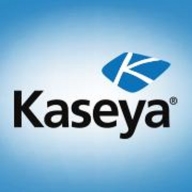![Quest Rapid Recovery [EOL] Logo](https://images.peerspot.com/image/upload/c_scale,dpr_3.0,f_auto,q_100,w_64/gx7fdc2s39xboxn6pa3oukdu9s75.png?_a=BACAGSDL)

Quest Rapid Recovery and Unitrends compete in the backup and recovery software category. Quest Rapid Recovery holds an upper hand with its user-friendly design and strong integration with virtual environments, whereas Unitrends is notable for its comprehensive appliance solution and broad OS support.
Features: Quest Rapid Recovery offers integration with virtual environments, built-in encryption, and easy restoration. It provides point-in-time recovery and data compression, making it suitable for physical and virtual server backups. Unitrends is known for its appliance-based approach, instant recovery features, and reporting capabilities, with broad compatibility across operating systems.
Room for Improvement: Quest Rapid Recovery could enhance technical support and add features like file-level backups and better reporting. Users also desire improved Hyper-V snapshot handling. Unitrends could improve in support engagement and simplify its interface, focusing on ease of use and process clarity. Both face feedback on pricing and support cost-effectiveness, with Quest looking to expand support capabilities and Unitrends addressing interface complexities and support response speed.
Ease of Deployment and Customer Service: Both Quest and Unitrends offer on-premises deployment, with Unitrends also providing hybrid cloud options. Quest is favored for its effective support, though it experiences occasional delays. Unitrends faces complex deployment challenges but benefits from knowledgeable support. Quest is slightly preferred for support responsiveness, while Unitrends provides flexibility in deployment strategies.
Pricing and ROI: Quest Rapid Recovery’s pricing is considered high, particularly for basic virtual backups, but users find value in storage efficiency and security features. Unitrends is initially more cost-competitive but has steep renewal pricing, appreciated for its hardware replacement option during renewals. Both highlight risk reduction as primary ROI, with Quest noted for data recovery capabilities and Unitrends for total cost of ownership. Quest’s costs are justified by feature set, whereas Unitrends offers a straightforward licensing model.


| Company Size | Count |
|---|---|
| Small Business | 16 |
| Midsize Enterprise | 5 |
| Large Enterprise | 2 |
| Company Size | Count |
|---|---|
| Small Business | 12 |
| Midsize Enterprise | 16 |
| Large Enterprise | 8 |
Quest Rapid Recovery [EOL] provides easy-to-use backup and recovery capabilities, emphasizing granular recovery and point-in-time restoration with simple installation, data replication, and user-friendly navigation.
Quest Rapid Recovery [EOL] helps manage infrastructure environments with features supporting disk backup, archiving, VM standby, and replication. Despite limitations like sluggish GUI, lack of support for tape and Mac, and high memory use, users appreciate its real-time data replication and strong reliability. The tool is employed in on-prem deployments and aids in disaster recovery, protecting data across cloud and on-premise servers, securing databases, and facilitating quick recovery during failures.
What are Quest Rapid Recovery [EOL]'s key features?Quest Rapid Recovery [EOL] is integral for industries requiring robust data protection, encompassing crucial server and database backups in compliance-focused environments with SQL databases and Hyper-V hosts, ensuring swift and dependable recovery solutions.
Unitrends offers cloud replication, remote management, and instant recovery, making it highly versatile for backup needs across physical and virtual nodes. Its seamless functionality and robust support ensure enhanced operational efficiency.
Unitrends is known for its ability to integrate with physical and virtual environments, ideal for backing up Azure VMs, local systems, and diverse operating systems. Users employ Unitrends for daily backups, disaster recovery, and file recovery tasks, protecting servers, VMware, Hyper-V clusters, and legacy systems. Real-time synchronization and monitoring are key to its efficiency, although some areas like interface and support structure require refinement. Pricing and stability concerns, as well as SQL backup sensitivity, suggest room for improvement. Users often encounter issues with billing, renewals, and dual VPN support, seeking more scalable and affordable options.
What are the key features of Unitrends?In industries like healthcare, financial services, and education, Unitrends plays a critical role in maintaining data integrity and accessibility. It is implemented to simplify backup processes, minimize downtime, and ensure compliance with data protection regulations, offering a comprehensive security strategy.
We monitor all Backup and Recovery reviews to prevent fraudulent reviews and keep review quality high. We do not post reviews by company employees or direct competitors. We validate each review for authenticity via cross-reference with LinkedIn, and personal follow-up with the reviewer when necessary.